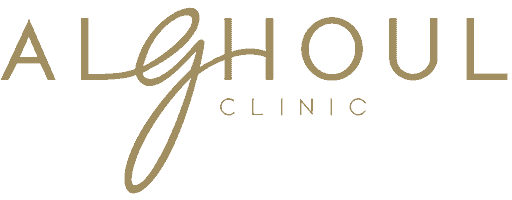What is Rhinoplasty?
Rhinoplasty is a surgical procedure that enhances the size, shape, and function of the nose. The procedure, commonly known as a “nose job”, is performed by sculpting the bone and cartilage in order to contour the nose without compromising its structure or its support mechanism. The goal of rhinoplasty is to correct the undesired features of the nose while providing enhanced facial symmetry. The procedure can also correct structural problems that can result in breathing difficulty such as septal deviation.
Candidates for Rhinoplasty
 Ideal candidates for a nose job with Dr. Mohammed Alghoul:
Ideal candidates for a nose job with Dr. Mohammed Alghoul:
- Are above the age of 16
- Are bothered by the shape or size of your nose
- Experience breathing problems due to your nasal structure
- Have realistic expectations for the procedure
What is the difference between rhinoplasty and septoplasty?
RRhinoplasty is a cosmetic procedure that modifies the shape and structure of the nose. Septoplasty is strictly a functional operation that straightens the septum, which is the partition that separates both nasal airways. When the septum deviates towards one side it causes narrowing or obstruction of that airway and results in difficulty breathing. Septal deviation can be naturally present in certain patients or occur after trauma (nasal fracture).
Septoplasty is always performed as a part of rhinoplasty to correct a crooked nose and also to obtain a piece of cartilage that is used for grafting during the procedure.
How many types of Rhinoplasty are out there?
Generally, there are three types of rhinoplasty approaches; OPEN, CLOSED, & PRESERVATION. All three types present different concepts of the procedure. Over the past decade, Rhinoplasty surgery has evolved and changed significantly in its principles to preserve the structure of the nose, and hence it became known as Structure Rhinoplasty. The concept is based on preserving the structure of the nose, so the results of the procedure are long-lasting and don’t get compromised with time.
Dr. Alghoul performs an open structure rhinoplasty and he utilizes an ultrasonic sow (Peizotome) to cut the bone precisely under direct vision. He uses pieces of cartilage as building blocks to reinforce the structure of the nose and to create a solid nasal tip projection and rotation that doesn’t get compromised over time.
RHINOPLASTY PROCEDURE DETAILS
Surgery is planned precisely according to the patient’s desire and needs. It is best if the patient comes to consultation with a specific complaint about their nose. Pictures are taken during the first consultation visit and a simulation of the profile results are made and discussed on photoshop. Once the desired hump reduction and tip projection and upward rotation are agreed upon, the simulated image is used to precisely plan the surgery.
Open surgery is done through a small incision on the skin bridge below the tip (columella) and is extended inside the nostrils. The ligaments of the nose a released for exposure of the cartilage framework, however they are reconstructed and put back together at the end of the case. Dr. Alghoul follows contemporary techniques in rhinoplasty where little cartilage is removed, and instead, it is mostly re-shaped and supported with cartilage grafts that are taken from the septum.
The nasal bone constitutes the upper third of the structure of the nose. Typically, a bone rasp is used to shave the bone and bring the hump down. When this is done, it creates an open wide roof in the nasal bone. Therefore. The nasal bone is often broken during surgery and fractured in to restore smooth narrow nasal contour and lines. Dr. Alghoul uses a special bone saw that utilizes ultrasonic energy to precisely cut the bone. This bone saw is used to precisely cut the nasal hump up to the millimeter and also to cut and mobilize the bone in the desired fashion instead of fracturing or breaking it. This adds a high level of accuracy to the procedure and refines the results.
What to Expect
Rhinoplasty is performed as an outpatient procedure under general anesthesia. After surgery the patient will have internal absorbable sutures and a few external permanent sutures on the skin bridge below the tip (columella). The permanent skin sutures are removed after one week. Two internal splints are placed inside the nose while an external splint is placed over the bridge of the nose to protect the nasal bone. All splints are removed in one week. Swelling and bruising of the nose and under the eyes is common and resolves over a period of one to two weeks. Swelling usually lags behind and can last longer. As the swelling resolves, gradually the shape of the nose continues to refine.
Is Rhinoplasty Covered by Insurance?
Insurance does not cover cosmetic rhinoplasty. However, a deformity that results secondary to trauma or broken nose could be eligible for coverage. If the procedure is approved, the portion usually covered is the one related to fixing the hump or bump on the nose and broken or deviated septum. Septoplasty alone can also be eligible for coverage if septum deviation is causing breathing problems.
Contact Dr. Alghoul
If you’d like to schedule a consultation with Dr. Alghoul to discuss rhinoplasty, or other facial cosmetic procedures such as chin augmentation or lower eyelid surgery please call .








